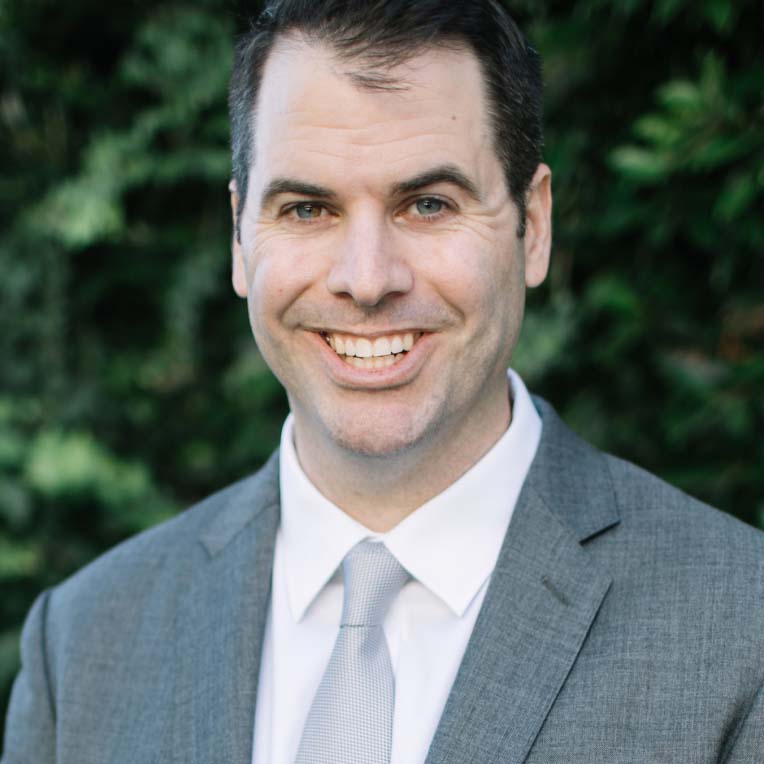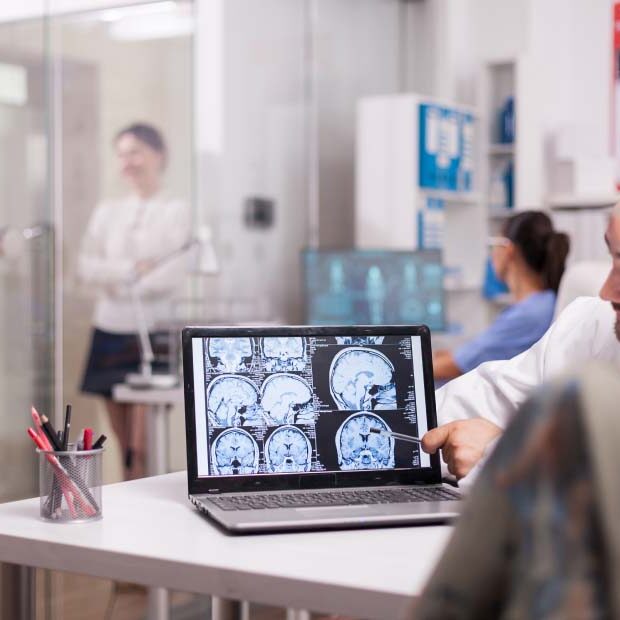Biography
Andrew Holbrook grew up in Orange County, California, with an older brother and a younger sister. From early childhood through his teenage years and beyond, he’s always been an intensely curious person. He loved all the subjects he studied at school, but was particularly drawn to math, science, and — his absolute favorite — history. Outside of school, he stayed active by playing ice hockey and water polo.
Dr. Holbrook considers his career and intellectual path a “long and winding road.” As his education progressed, his love of history drove him to study Latin and ancient Greek. He wanted to develop a deeper understanding of how European and western civilizations developed, and how language influences the way that we think about the world. After high school, Dr. Holbrook attended the University of California, Berkeley, for his undergraduate studies, earning a BA in Classical Languages and German.
After graduation, Dr. Holbrook took a job in northeastern China teaching English and math, one of the few jobs he could find in the midst of the 2009 financial crisis. He loved his time there, making deep friendships and learning more about the history of civilizations in this part of the world.
After working in China for a couple of years, Dr. Holbrook decided to make a career change.

With all the financial uncertainty unfolding, he knew he wanted to pursue an intellectually engaging professional path that would leverage his longstanding interest in math and analysis while also providing him with stability. With those two goals in mind, he decided to attend graduate school at the University of California, Irvine, to earn a Ph.D. in Statistics.
Today, he is a computational statistician and an Assistant Professor of Biostatistics at the Fielding School of Public Health, University of California, Los Angeles. His research interests include Bayesian statistics and machine learning, dimension reduction, imaging statistics, and viral epidemiology.
“A computational statistician is interested in learning things about the world through data. We have a lot of very complex data today. And as that data gets more complex, I want to answer more complex questions with it.”
– Dr. Andrew Holbrook

Biography
Andrew Holbrook grew up in Orange County, California, with an older brother and a younger sister. From early childhood through his teenage years and beyond, he’s always been an intensely curious person. He loved all the subjects he studied at school, but was particularly drawn to math, science, and — his absolute favorite — history. Outside of school, he stayed active by playing ice hockey and water polo.
Dr. Holbrook considers his career and intellectual path a “long and winding road.” As his education progressed, his love of history drove him to study Latin and ancient Greek. He wanted to develop a deeper understanding of how European and western civilizations developed, and how language influences the way that we think about the world. After high school, Dr. Holbrook attended the University of California, Berkeley, for his undergraduate studies, earning a BA in Classical Languages and German.
After graduation, Dr. Holbrook took a job in northeastern China teaching English and math, one of the few jobs he could find in the midst of the 2009 financial crisis. He loved his time there, making deep friendships and learning more about the history of civilizations in this part of the world.
After working in China for a couple of years, Dr. Holbrook decided to make a career change. With all the financial uncertainty unfolding, he knew he wanted to pursue an intellectually engaging professional path that would leverage his longstanding interest in math and analysis while also providing him with stability. With those two goals in mind, he decided to attend graduate school at the University of California, Irvine, to earn a Ph.D. in Statistics.
Today, he is a computational statistician and an Assistant Professor of Biostatistics at the Fielding School of Public Health, University of California, Los Angeles. His research interests include Bayesian statistics and machine learning, dimension reduction, imaging statistics, and viral epidemiology.
“A computational statistician is interested in learning things about the world through data. We have a lot of very complex data today. And as that data gets more complex, I want to answer more complex questions with it.”
– Dr. Andrew Holbrook

Research Focus
Challenges
One of the ways to detect Alzheimer’s disease in a patient is through biomarkers in spinal fluid. To obtain spinal fluid, medical professionals must perform a lumbar puncture, where a needle is inserted between two vertebrae and into the spine. This test is invasive. If there were an accurate way to diagnose Alzheimer's disease via brain images, it would be better for patients and the healthcare system. Dr. Holbrook is working to make this potential avenue of diagnosis viable.
Focus and Priorities
Dr. Holbrook is working on creating algorithms that can detect meaningful phenotypes from brain images. He and his collaborators are using MRI data collected from individuals with Alzheimer's disease. Many of these individuals receive brain scans at regular intervals, such as every six months or every year. He and his team
Focus and Priorities
Dr. Holbrook is working on creating algorithms that can detect meaningful phenotypes from brain images. He and his collaborators are using MRI data collected from individuals with Alzheimer's disease. Many of these individuals receive brain scans at regular intervals, such as every six months or every year. He and his team are using these scans to attempt to correlate differences in various regions of the brain with an individual’s health. The key question they want to answer: How do visible changes in the brain correlate to key outcomes in patients with Alzheimer’s disease?
are using these scans to attempt to correlate differences in various regions of the brain with an individual’s health. The key question they want to answer: How do visible changes in the brain correlate to key outcomes in patients with Alzheimer’s disease?
Benefits
Dr. Holbrook is working to develop algorithms that will provide doctors with more accurate data on their patients through brain scans versus relying on invasive tests. Ultimately, he hopes his work will give us a more complete understanding of Alzheimer’s disease and better tools for diagnosing the disease.
Karen Toffler Charitable Trust Investment
Dr. Holbrook will be using his funding from The Karen Toffler Charitable Trust to train graduate students in the application of large, hierarchical models. These graduate students will be presenting their work at the Statistical Methods in Imaging Conference. During that time, they’ll have the opportunity to explore and test software solutions with Dr. Nick Tustison, a key collaborator in Dr. Holbrook’s research. This training, and the subsequent software they develop, will bring us one step closer to understanding how changes in different regions of the brain relate to key symptoms, behaviors, and outcomes in Alzheimer’s disease.
Karen Toffler Charitable Trust Investment
Dr. Holbrook will be using his funding from The Karen Toffler Charitable Trust to train graduate students in the application of large, hierarchical models. These graduate students will be presenting their work at the Statistical Methods in Imaging Conference. During that time, they’ll have the opportunity to explore and test software solutions with Dr. Nick Tustison, a key collaborator in Dr. Holbrook’s research. This training, and the subsequent software they develop, will bring us one step closer to understanding how changes in different regions of the brain relate to key symptoms, behaviors, and outcomes in Alzheimer’s disease.
“We need to find better ways to analyze data sets like the UK Biobank. It’s going to take time. But we’ll get there, and science will be the better for it. When you have data science, you have reproducibility.”
– Dr. Andrew Holbrook